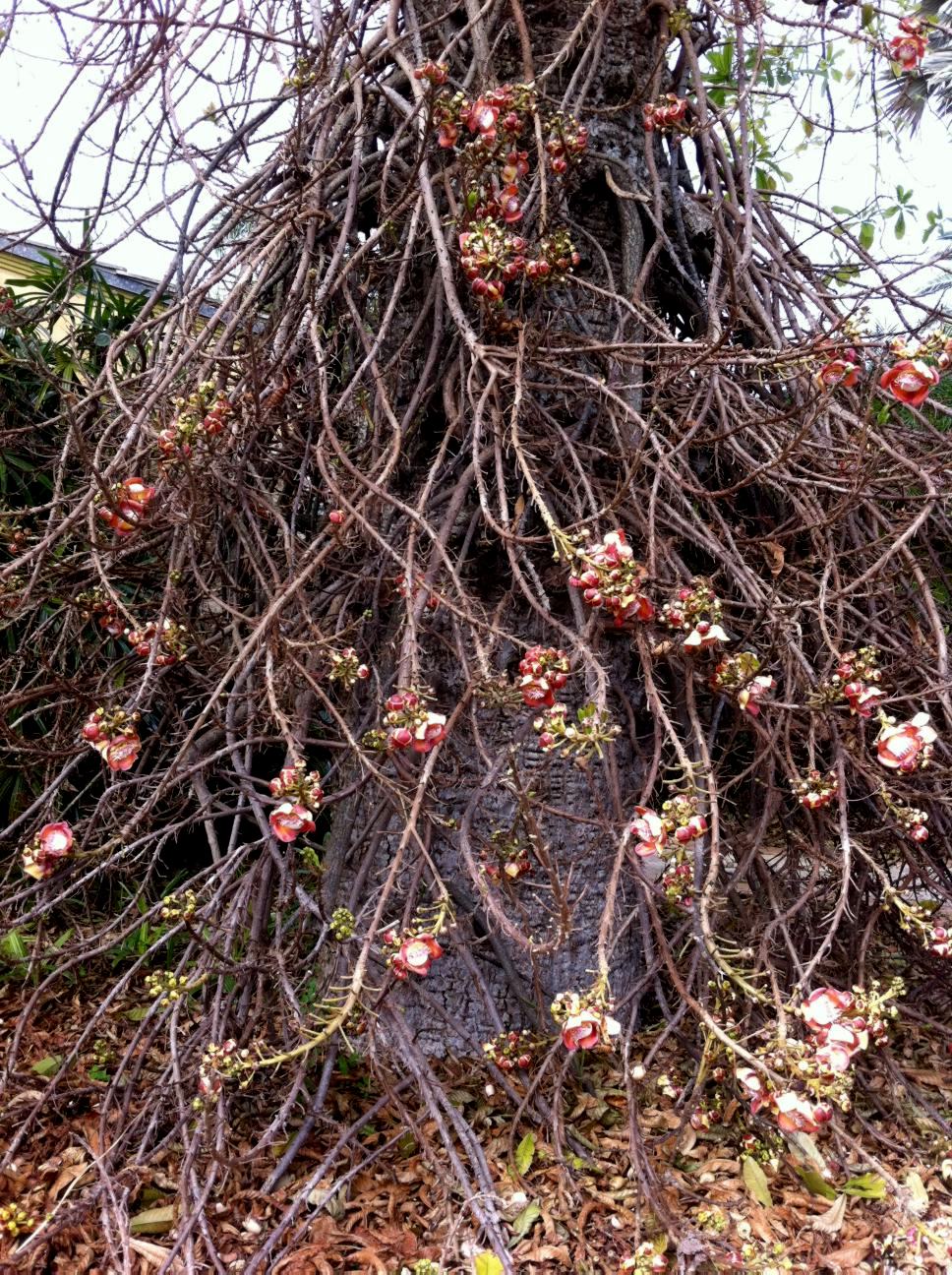Couroupita guianensis
This cannonball tree is in the Fairchild Tropical Botanic Garden. It is in its peak and has many flowers that are very beautiful and pleasantly fragrant. Couroupita guianensis, whose common names are Ayahuma and the Cannonball Tree, is an evergreen tree native to tropical northern South America and to the southern Caribbean. After setting, it produces many brown cannon-ball-like fruits. Cannonball Tree flowers do not have nectar, and these flowers are mainly pollinated by carpenter bees in search of pollen. In its native environment, the mature fruits fall from the tree, crack open when they hit the ground, often causing the sound of a small explosion.
Amazingly, many if not all the exotic flora have inherent medicinal properties used by the local inhabitants and often confirmed by scientific research. The Cannonball Tree is known to possess antibiotic, antifungal, antiseptic and analgesic qualities. It is believed to be useful for colds and stomach aches. Juice made from the leaves is used to cure skin diseases, and tree parts can treat malaria. The inside of the fruit can disinfect wounds and young leaves ease toothache. My plan is to come back here, get a few cannonballs and drop them from a high coconut tree to hear the loud bang they make. That would be fun. But inhale or ingest any part of this tree to cure disease I may have is probably not something I would do.



No comments:
Post a Comment